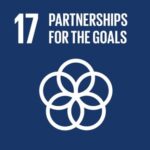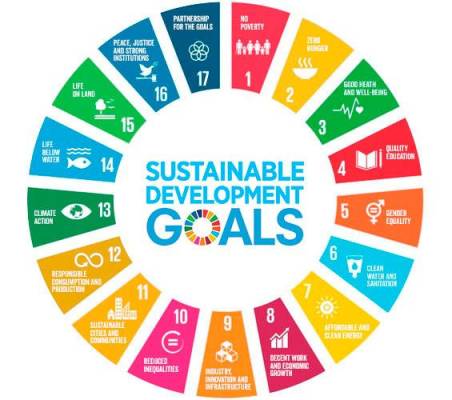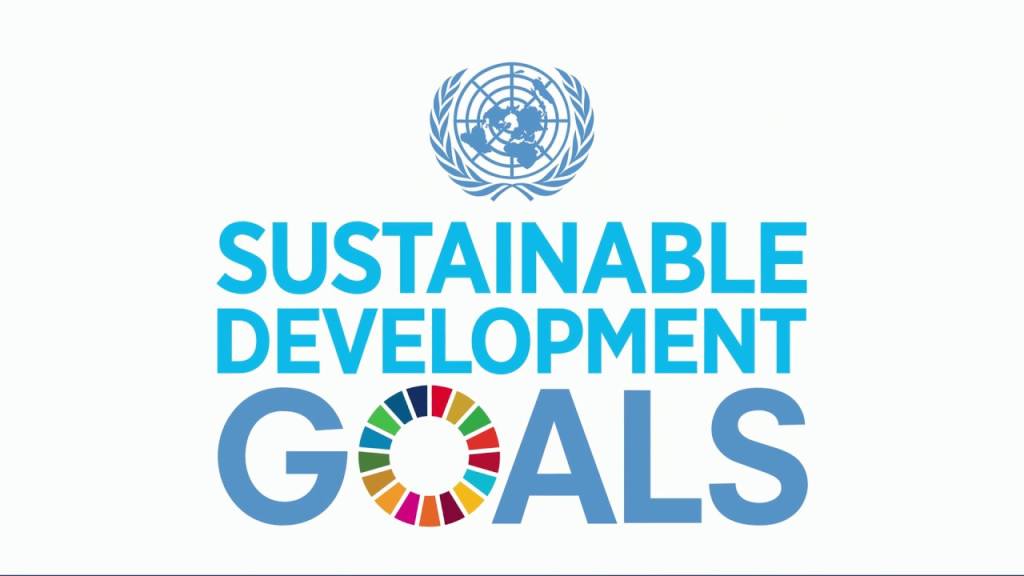The Sustainable Development Goals or the SDGs, also known as the Global Goals, are an urgent call for action for all countries – developing or developed. These goals promote prosperity while protecting the environment and the planet from the predicted doom. The SDGs are sort of a shared blueprint for peace and prosperity for people and the planet. The SDGs are a compass following which will lead to a better, safer, just, and sustainable planet.
History Of SDGs
After the success of the eight Millennium Development Goals (MDGs) of the United Nations as noted at the special event held in September 2013, the General Assembly set up a 30-member Open Working Group to work on a proposal for the Sustainable Development Goals (SDGs) in the same year to further plan post-2015 development agenda. After working for 2 years on this, in January 2015, the negotiation process was started on these SDGs by the General Assembly. The 2030 Agenda for Sustainable Development was adopted by all the UN member states in September 2015. And at the heart of this agenda were these 17 Sustainable Development Goals aka the SDGs.
Following are the 17 Sustainable Development Goals of the UN’s 2030 Agenda for Sustainable Development:
Goal 1: No Poverty

The first goal aims to end poverty in all its forms everywhere. Poverty is omnipresent be it in a developed country or a developing one. The world witnessed a decrease in poverty from 1.9 billion people in 1990 to 734 million in 2015. This shows that “No Poverty” is an achievable goal and that the damage done by COVID-19 is recoverable.
Goal 2: Zero Hunger

The second goal talks about ending hunger and achieving food security. It aims to improve nutrition and promote sustainable agriculture. Farm sustainability means being mindful of what we are eating and how we are producing the food. The Farmer Managed Natural Regeneration (FMNR) is a low-cost land restoration strategy that helps impoverished farmers. It helps them fight poverty and hunger by increasing food and timber production and resilience to climate extremes.
Goal 3: Good Health and Well-being

The third goal promotes healthy lives and well-being for all ages, directly impacting life expectancy. In collaboration with communities in Vietnam, HelpAge 2006 has been working on establishing a community-based organization (CBOs) called the Intergenerational Self-Help Clubs (ISHC). ISHCs have worked relentlessly to reduce poverty, promote financial independence, and improve the health conditions of beneficiaries by facilitating high-quality primary healthcare.
Goal 4: Quality Education

Education is a fundamental right for every individual and this goal ensures inclusive and equitable quality education for everyone. It also promotes lifelong learning opportunities for all. It ensures all youth and a good proportion of adults, both men and women achieve literacy and numeracy by 2030.
Goal 5: Gender Equality

Despite progress in reducing gender inequality over the last few decades, it still persists. The goal is a reminder to every member nation to end all sorts of discrimination against women and girls everywhere. It also targets thwarting several harmful practices such as violence, trafficking, early and forced marriage, and female genital mutilation.
Goal 6: Clean Water and Sanitation

By 2030, the sixth goal aims to achieve universal and equitable access to safe and affordable drinking water for all. It also aims to protect and restore water-related ecosystems, improve water quality by reducing pollution and increase water-use efficiency. The UN aims to eliminate open defecation and prioritize the needs of vulnerable individuals, especially women and girls.
Goal 7: Affordable and Clean Energy

The 7th goal aims to provide sustainable and modern energy access for everyone as non-renewable sources decline. Clean and affordable energy is a key to the development of agriculture, business, communications, education, healthcare, and transportation and its absence hinders economic and human progress. By 2030, the aim is to increase renewable energy share and improve energy efficiency rate globally.
Goal 8: Decent Work and Economic Growth

The COVID-19 pandemic resulted in the worst economic crisis faced by the world in decades and overthrew the progress to decent work for all. Through this goal, the UN wants to promote sustained, inclusive, and sustainable economic growth. To achieve this, UN targets to protect labor rights, promote safe and secure work environments, and eradicate forced labor, and human trafficking. By 2030 UN aims to achieve full and productive employment and decent work for all men and women.
Goal 9: Industry, Innovation, and Infrastructure

The ninth goal aims to build resilient and sustainable infrastructure to support economic development and human well-being, including regional and transborder infrastructure. It also promotes inclusive and sustainable industrialization, increases its share of employment and GDP, and doubles its share in the least developed countries. To foster innovation, the goal aims to increase the number of R&D workers per 1 million people and enhance scientific research by upgrading the technological capabilities of industrial sectors in all countries.
Goal 10: Reduced Inequalities

By reducing inequalities, this goal ensures that no one is left behind in achieving Sustainable Development Goals. The UN aims to achieve greater equality through progressive adoption of policies, including fiscal, wage, and social protection policies. Through this goal, the UN wants to ensure equal opportunities by eliminating discriminatory laws, policies, and practices.
Goal 11: Sustainable Cities and Communities

The eleventh goal wants to make cities and human settlements inclusive, safe, resilient, and sustainable as more than half of the world’s population lives in cities, and cities are drivers of economic growth. They contribute more than 80% of the global GDP and thus the goal wants to ensure access to adequate, safe, and affordable housing and basic services and also to upgrade slums. Not only economically but the aim also wants to strengthen the efforts to protect the world’s cultural and natural heritage.
Goal 12: Responsible Consumption and Production

By ensuring sustainable consumption and production, we are sustaining the livelihoods of current as well as future generations. Unsustainable patterns have led to environmental degradation, climate change, biodiversity loss, and pollution. To recover from this, the goal aims to achieve sustainable management and efficient use of natural resources, reduce waste generation, promote sustainable public procurement practices, and encourage people everywhere to adopt lifestyles that are in harmony with nature.
Goal 13: Climate Action

Taking urgent action to combat climate change and its devastating impacts is imperative to save lives and livelihoods. Countries must build resilience and adapt to predicted hazards and natural disasters. For this, the UN wants the countries to integrate climate change measures into national policies, strategies, and planning.
Goal 14: Life Below Water

Healthy marine resources are crucial to human existence and life on Earth. With human activities endangering the planet’s largest ecosystem of oceans and seas that cover 70% of the planet, it is our primary duty to protect and conserve these resources. By sustainably managing and protecting marine and coastal ecosystems we can avoid any significant adverse impacts. Furthermore, the goal aims to prevent and significantly reduce pollution of all kinds by 2025. Implementing international law as expressed in UNCLOS will improve ocean conservation and sustainable use of the ocean’s resources.
Goal 15: Life On Land

The fifteenth goal is about conserving life on land, protecting, restoring, and promoting sustainable use of terrestrial ecosystems, sustainably managing forests, combating desertification, halting and reversing land degradation, and halting biodiversity loss. The UN also urges countries to take immediate action to end poaching and trafficking of protected species and to integrate ecosystem and biodiversity values into national and local planning, development processes, and poverty reduction strategies.
Goal 16: Peace, Justice, and Strong Institutions

The goal aims to promote peaceful and inclusive societies for sustainable development and to provide access to justice for all and build effective, accountable, and inclusive institutions at all levels. The UN firmly believes that people should feel safe and free of fear from violence and should live their lives irrespective of their ethnicity, faith, or sexual orientation. The goal can be achieved by reducing all forms of violence, exploitation, trafficking, and abuse of children, reducing corruption and bribery, and ensuring responsive, participatory, and representative decision-making at all levels.
Goal 17: Partnerships For The Goals

The above sixteen goals will be effective only when all the countries – developing and developed – take urgent action to achieve the goals. It requires Global Partnerships between the governments, private sector, and civil society. It is only by strengthening the means of implementation and revitalizing the Global Partnership that we can achieve a safer, more secure, and more sustainable world.
Conclusion

To get a regular follow-up on the progress of these goals, the UN organizes an Annual High-level Political Forum on Sustainable Development to get a review of the SDGs. The Global Sustainable Development Report (GSDR) plays an important role in the evaluation of the advocacy and outreach activities related to the SDGs. The UN Secretary-General releases an annual report on the SDGs’ progress, which is created in conjunction with the UN systems and is based on the global indicator framework, data from national statistics systems, and regional data. Also, an independent group of scientists appointed by the Secretary-General creates the Global SD Report every four years to inform the General Assembly’s quadrennial SDG review discussions.










